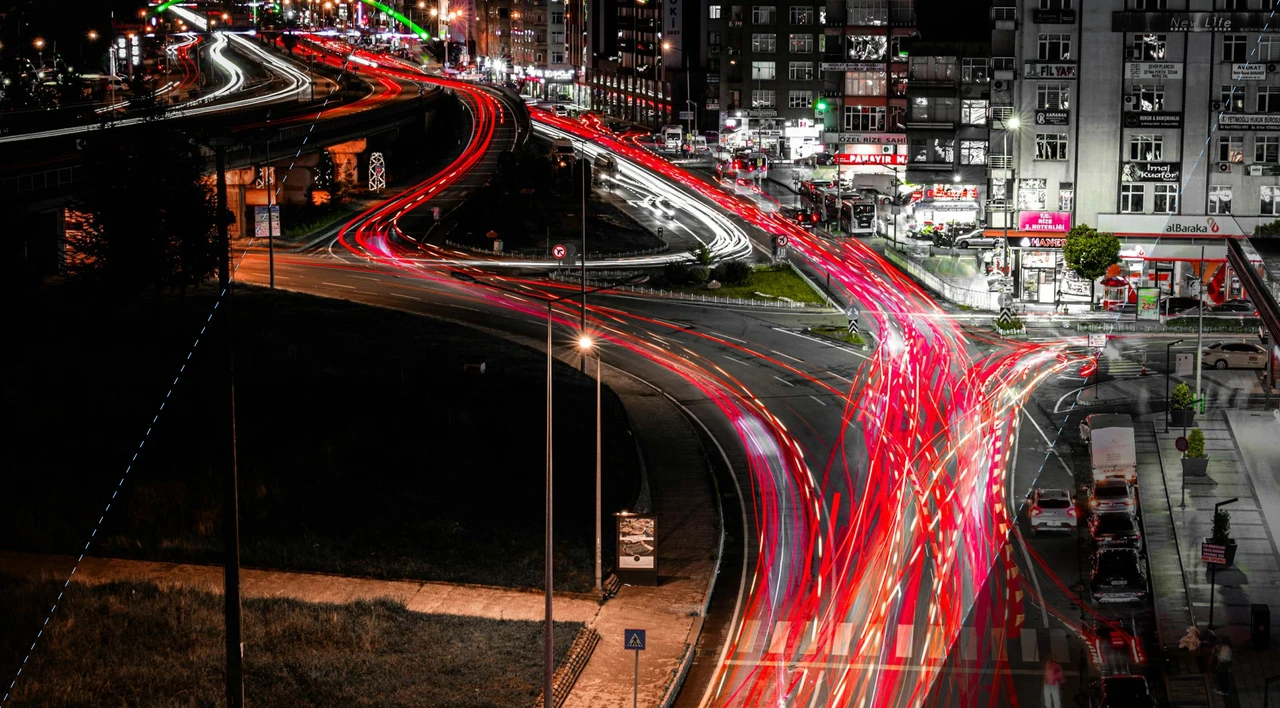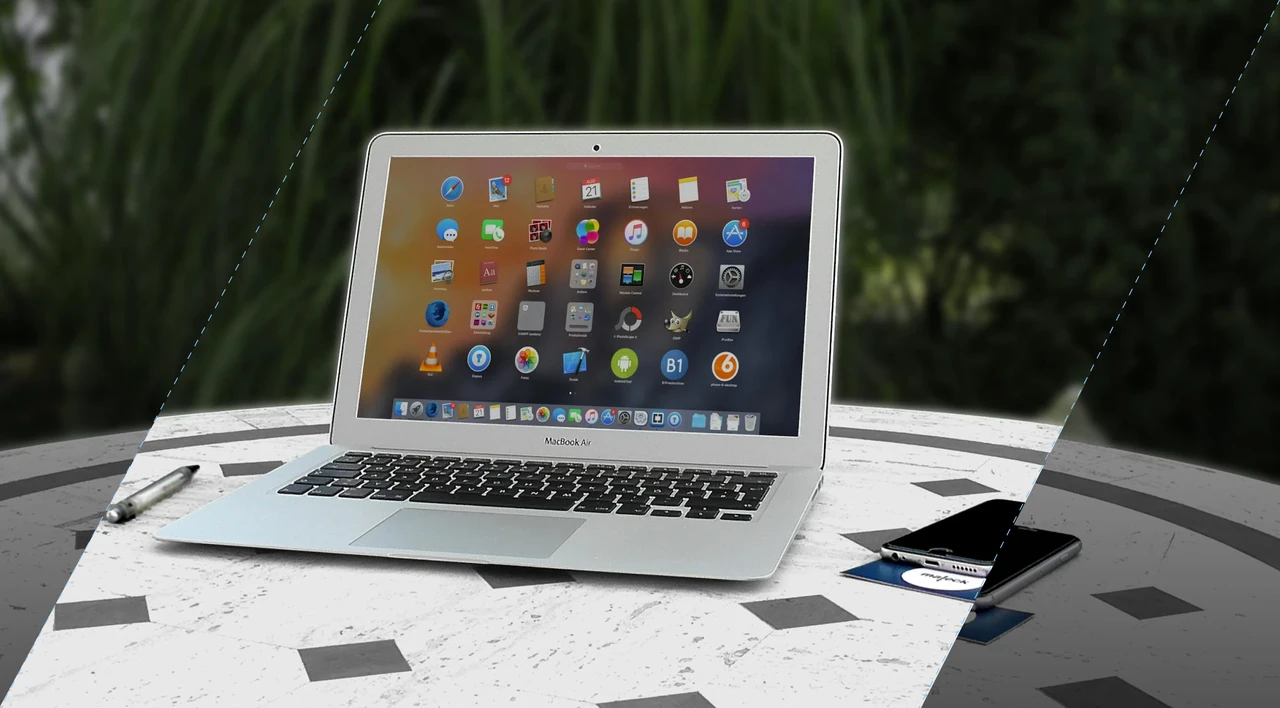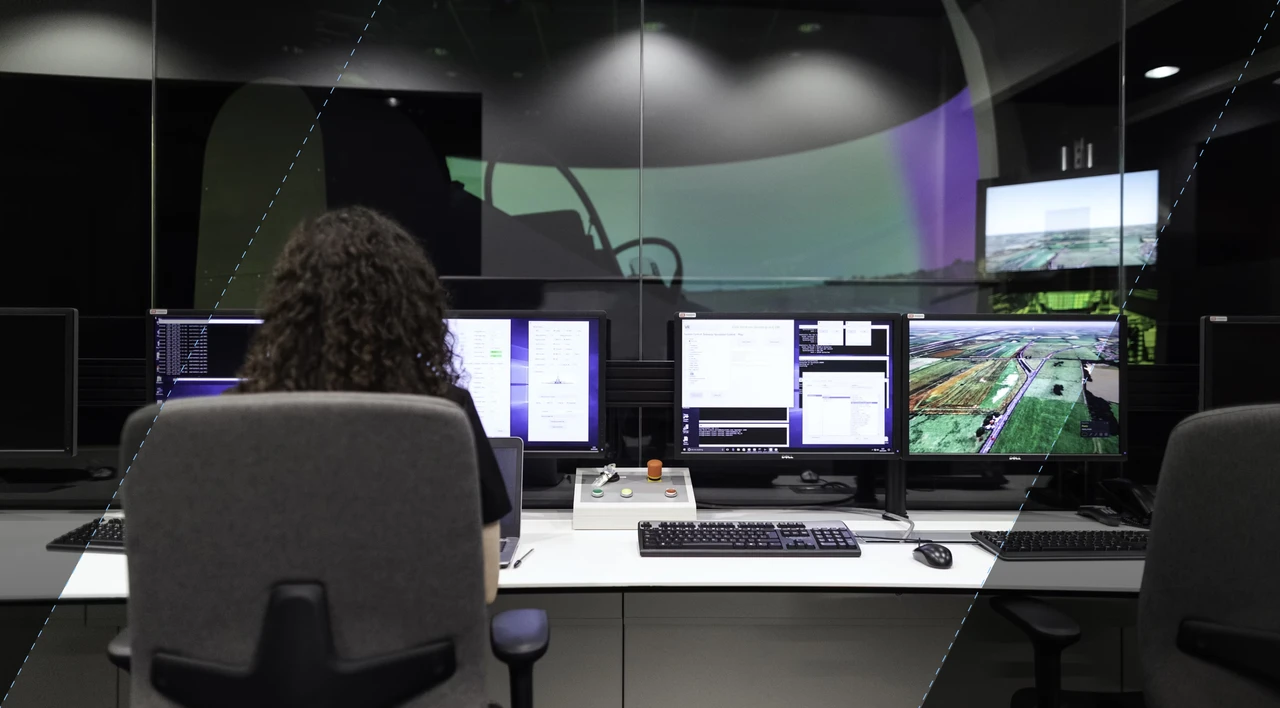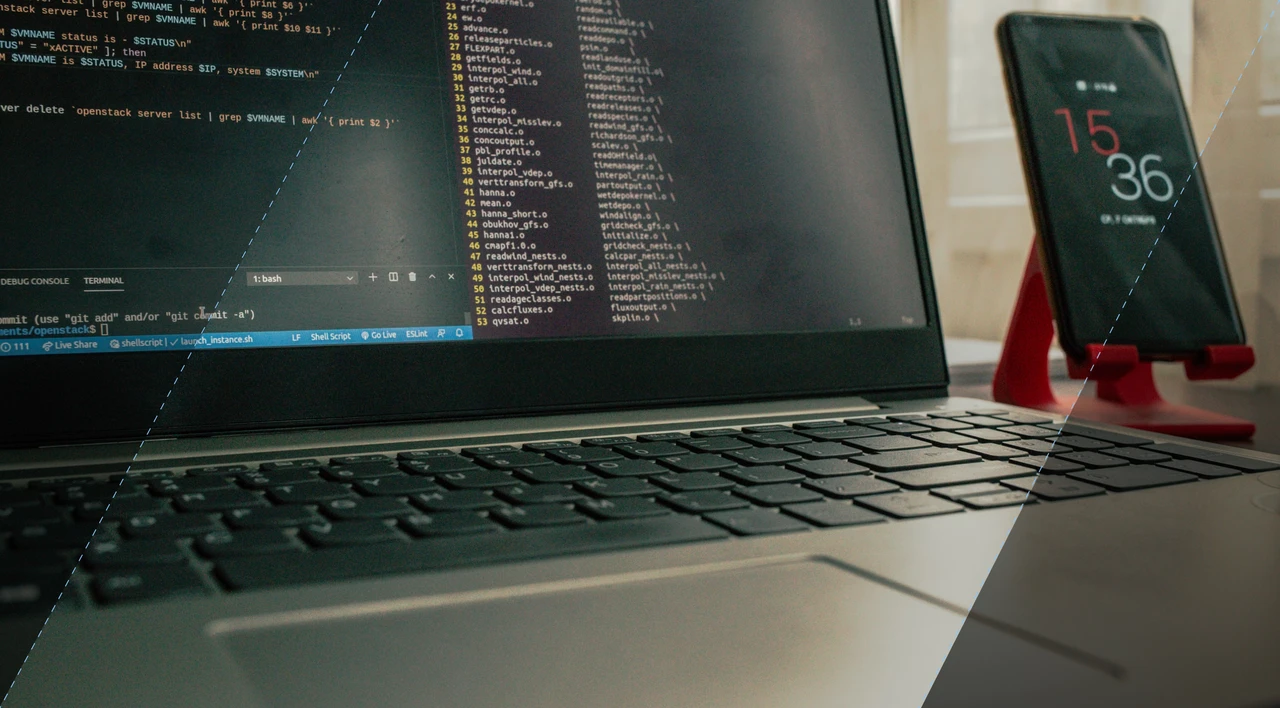SHARE
IoT Smart City Solutions: Transforming Urban Living

Contents
Contents
Did you know that by 2050, around 68% of the global population is expected to reside in cities and urban areas? As our cities grow, the need for smart solutions becomes increasingly important. This is where IoT technology comes in, offering innovative solutions to enhance the quality of life and ensure urban safety.
In smart cities, IoT integration involves interconnected applications, systems, buildings, and devices, creating highly efficient living and working environments. Cities like Scottsdale, Corona, and San Mateo County in North America have already demonstrated the potential of technology in managing city infrastructure and services.
In this article, we will explore the importance of IoT in smart cities, discuss real-world examples of IoT applications, and examine the various roles IoT can play in enhancing urban living.
Key Takeaways:
- Smart cities driven by IoT technology offer solutions to enhance the quality of life and urban safety.
- IoT integration involves interconnected applications, systems, buildings, and devices.
- Cities like Scottsdale have already demonstrated the potential of technology in managing city infrastructure and services.
- IoT can play multiple roles in smart cities
The Role of IoT in Smart Cities
IoT integration plays a crucial role in transforming smart cities by offering a wide range of benefits. By leveraging IoT solutions, cities can enhance infrastructure management, improve energy efficiency, ensure public safety, optimize waste management, and streamline transportation systems.
For example, the Scottsdale Water Conservation Office developed a Smart Water Conservation Application that utilizes automation and technology to enhance water conservation efforts. With this proactive approach, the city saved a staggering 38 million gallons of water in 2022.
Let’s explore some key ways in which IoT development contributes to the growth and development of smart cities.
Improved Infrastructure Management
IoT devices are deployed across critical city infrastructure such as bridges, roads, and buildings, enabling real-time monitoring and management.
These devices collect valuable data that helps city authorities identify maintenance needs, reduce downtime, and ensure the safety of residents and visitors.
Through continuous monitoring, IoT solutions allow for proactive infrastructure management, preventing potential failures and promoting a sustainable urban environment.
Enhanced Energy Efficiency
Utility companies are already implementing IoT in energy saving into their processes, with 77% of such organizations have deployed at least one Internet of Things project.
IoT sensors installed in buildings provide valuable insights into energy usage patterns, enabling city authorities to optimize energy conservation efforts. By analyzing data from IoT devices, cities can identify areas of high energy consumption and implement targeted strategies to reduce waste.
This not only leads to cost savings but also contributes to environmental sustainability, making smart cities energy-efficient and eco-friendly.
Public Safety and Well-being
IoT solutions enhance public safety by enabling real-time monitoring and detection of potential criminal activities. For instance, video surveillance systems equipped with IoT sensors can identify suspicious behavior and promptly alert law enforcement agencies.
A study in Stockholm found that surveillance cameras reduced the overall crime rate by approximately 25% at stations in the city center.
Additionally, IoT devices can be utilized for monitoring the health and well-being of residents, enabling remote patient monitoring, and ensuring timely medical interventions.
Efficient Waste Management
Incorporating IoT sensors into trash cans and waste management systems revolutionizes waste collection processes in smart cities. These sensors can monitor fill levels, optimizing waste collection routes and schedules, significantly reducing operational costs and minimizing the impact on the environment.
By streamlining waste management, smart cities can ensure cleanliness, improve sanitation, and promote a sustainable waste reduction strategy.
Optimized Transportation Systems
IoT devices bring intelligence to transportation networks in smart cities. Industrial IoT sensors installed in traffic lights, for instance, collect real-time traffic data, enabling traffic management systems to optimize signal timings and reduce congestion.
This results in smoother traffic flow, shorter travel times, improved air quality, and enhanced overall transportation efficiency.
IoT in Smart Cities – A Key to Urban Advancement
|
Benefits of IoT in Smart Cities |
Example |
|
Improved Infrastructure Management |
Real-time monitoring of bridges, roads, and buildings |
|
Enhanced Energy Efficiency |
Optimization of energy usage in buildings |
|
Public Safety and Well-being |
Real-time detection of potential criminal activities |
|
Efficient Waste Management |
Streamlined waste collection based on fill levels |
|
Optimized Transportation Systems |
Real-time traffic data for traffic signal optimization |
By harnessing the power of IoT solutions, smart cities can effectively manage resources, improve services, and create sustainable urban environments.
As technology continues to advance, IoT integration will play an increasingly vital role in shaping the future of smart cities, making them more efficient, livable, and resilient.
How IoT Works in Smart Cities
The Smart Cities market worldwide is expected to reach US$115.30bn in 2029. In smart cities, the integration of IoT relies on a network of interconnected devices. These devices, ranging from sensors to vehicles and home appliances, exchange data to enhance various aspects of urban living. This data is stored in the cloud or servers, enabling the convergence of physical and digital elements.
The seamless exchange of data between IoT devices forms the foundation of smart city systems. For instance, sensors embedded in streetlights can collect real-time data on traffic patterns, enabling smart traffic management systems to optimize flow and reduce congestion. Similarly, IoT devices in buildings can monitor energy consumption, allowing for intelligent energy management solutions to optimize usage and promote sustainability.
One of the key elements of IoT in smart cities is the concept of edge computing. It enables data to be processed closer to the source, reducing latency and improving response times. This is particularly important for applications that require real-time data analysis, such as emergency response systems and public safety monitoring.
To ensure the security and integrity of the IoT network in smart cities, firewall systems are implemented. These systems protect data transmission and prevent unauthorized access to the network. By integrating multiple layers of security, smart cities can mitigate cybersecurity risks and safeguard sensitive information.
Alongside IoT, other technologies like artificial intelligence (AI), cloud computing, and machine learning play a significant role in the development and operation of smart cities. AI algorithms can analyze vast amounts of integrated data collected by IoT devices, providing valuable insights for infrastructure management, resource allocation, and predictive analytics.
Cloud computing enables scalable storage and processing capabilities for IoT-generated data, while machine learning algorithms continuously improve the efficiency and effectiveness of smart city systems.
Key Technologies Enabling IoT in Smart Cities
|
Technology |
Description |
|
Internet of Things (IoT) |
Interconnected devices that exchange data to enable smart city solutions. |
|
Edge Computing |
Data processing is performed closer to the source, reducing latency and improving response times. |
|
Firewall Security Systems |
Protect the IoT network from unauthorized access and ensure data transmission security. |
|
Artificial Intelligence (AI) |
Algorithms that analyze data collected by IoT devices, enabling advanced analytics and predictive capabilities. |
|
Cloud Computing |
Scalable storage and processing capabilities for IoT-generated data. |
|
Machine Learning |
Algorithms that continuously improve the performance and efficiency of smart city systems. |
By leveraging these technologies, smart cities can create innovative solutions that address urban challenges, enhance sustainability, and improve the quality of life for residents and visitors alike.
Smart Cities are the Key to a Sustainable Future
As the world’s population becomes increasingly urban, smart cities are playing a crucial role in achieving a sustainable future. Embracing smart technologies is essential to prevent cities from becoming unsustainable strains on resources and infrastructure.
The integration of IoT and other cutting-edge technologies in smart cities holds the key to optimizing resource management, enhancing public services, and reducing environmental impact.
On an individual basis, 45% of smart home users cite energy efficiency as the primary reason for their purchase.
By leveraging IoT technology, smart cities can revolutionize resource management to ensure efficient utilization and conservation. Through real-time data collection and analysis, IoT devices can monitor and optimize energy consumption, water usage, and waste management, leading to significant reductions in resource wastage and increased sustainability.
The application of technology in smart cities also extends to the provision of public services. IoT-enabled solutions can enhance the delivery of services such as transportation, healthcare, and emergency response.
Real-time monitoring and data-driven insights allow for more efficient transportation networks, better healthcare outcomes, and improved emergency response systems, ultimately improving the quality of life for residents while minimizing the strain on resources.
Furthermore, the integration of IoT in smart cities contributes to environmental sustainability. The use of IoT sensors and devices enables the implementation of smart solutions for air and water quality monitoring, waste management optimization, and sustainable energy management. These solutions not only help reduce environmental pollution but also foster a healthier and more sustainable urban environment for residents.
In summary, smart cities, empowered by IoT technology and other innovative solutions, hold immense potential in building a sustainable future. By embracing these technologies, cities can optimize resource management, enhance public services, and mitigate their environmental impact, ensuring a better quality of life for residents while preserving the planet for future generations.
Top 10 Use Cases of IoT in Smart Cities
Cisco estimates that cities that run on information can improve their energy efficiency by 30% within 20 years. IoT technology plays a pivotal role in transforming the way cities function and improving the quality of life for their residents.
Let’s explore the top 10 use cases that illustrate how IoT can revolutionize urban living:
- Traffic Management Systems: IoT-enabled traffic management systems utilize sensors and real-time data to enhance traffic flow, reduce congestion, and improve transportation efficiency. By analyzing traffic patterns, adjusting signal timings, and providing intelligent routing information, these systems make commuting smoother and more time-efficient.
- Waste Management and Optimization: Smart waste management systems incorporate IoT sensors in trash cans to monitor and optimize waste collection schedules. These sensors track the fill levels of bins, allowing waste management authorities to optimize collection routes, reduce operational costs, and promote sustainable waste disposal practices.
- Water Quality and Distribution Monitoring: IoT devices can continuously monitor water quality parameters such as pH levels, temperature, and chemical composition. By maintaining real-time data, cities can ensure the delivery of safe and clean drinking water to residents while proactively detecting and resolving issues in the water distribution network.
- Energy Management: IoT-enabled energy management systems offer real-time monitoring and control of energy consumption in buildings and public spaces. By optimizing usage patterns and identifying energy-efficient alternatives, cities can reduce their carbon footprint, conserve energy resources, and lower utility costs. For more on this, explore the role of IoT in the energy sector.
- Public Safety and Emergency Response Systems: IoT devices and sensors enhance public safety by providing real-time surveillance, early detection of potential security threats, and quick emergency response. Smart city infrastructure equipped with video analytics, gunshot detection, and predictive analytics helps law enforcement agencies and emergency services protect citizens more efficiently.
- Intelligent Public Transportation Networks: IoT integration enables intelligent, connected transportation systems in smart cities. Real-time tracking and monitoring of public transport vehicles allow commuters to plan their journeys more effectively, reducing waiting times and optimizing routes. IoT devices also contribute to improved maintenance and fleet management, ensuring the smooth operation of public transportation services.
- Smart Parking: Smart parking solutions leverage IoT technology to guide drivers to available parking spaces, reducing the time spent searching for parking and minimizing traffic congestion. By utilizing sensors and mobile applications, cities can optimize parking resources, enhance the parking experience, and encourage sustainable transportation options.
- Smart Buildings: IoT-enabled smart buildings use sensors and automation to optimize energy usage, improve occupant comfort, and ensure efficient operations. These buildings can adjust temperature, lighting, and ventilation based on occupancy and environmental conditions, leading to energy savings, increased productivity, and enhanced overall building performance.
- Environmental Monitoring: IoT devices equip cities with the ability to monitor environmental factors such as air quality, noise pollution, and weather conditions. This data helps city authorities take proactive measures to mitigate environmental risks, improve public health, and create sustainable urban environments.
- Citizen Engagement: IoT technology enhances citizen engagement by enabling interactive platforms and applications. Citizens can access real-time information about city services, participate in decision-making processes, and provide feedback to local authorities. This level of engagement fosters transparency, trust, and collaboration between residents and the city administration.
|
Use Case |
Description |
|
Traffic Management Systems |
Utilizes IoT sensors and real-time data to enhance traffic flow and transportation efficiency. |
|
Waste Management and Optimization |
Monitors and optimizes waste collection schedules using IoT sensors in trash cans. |
|
Water Quality and Distribution Monitoring |
Continuously monitors water quality and ensures the safe distribution of drinking water. |
|
Energy Management |
Offers real-time monitoring and control of energy consumption in buildings and public spaces. |
|
Public Safety and Emergency Response Systems |
Enhances public safety through surveillance, threat detection, and quick emergency response. |
|
Intelligent Public Transportation Networks |
Tracks and optimizes public transport scheduling, routing, and maintenance. |
|
Smart Parking |
Guides drivers to available parking spaces, reducing congestion and optimizing parking resources. |
|
Smart Buildings |
Optimizes energy usage, comfort, and operations in buildings through IoT sensors and automation. |
|
Environmental Monitoring |
Monitors air quality, noise pollution, and weather conditions to create sustainable urban environments. |
|
Citizen Engagement |
Enhances citizen participation, transparency, and collaboration through interactive IoT platforms. |
Conclusion
With the world’s population rapidly urbanizing, embracing smart city technologies is not just a choice, but a necessity for ensuring a sustainable future. By integrating IoT solutions into urban landscapes, cities can efficiently manage their resources, reduce energy consumption, and enhance public services.
By leveraging IoT for smart cities, urban areas can effectively monitor infrastructure, automate processes, and improve decision-making. This results in increased efficiency, cost savings, and enhanced public safety. Additionally, IoT enables better waste management practices, reducing environmental impact and creating cleaner, healthier communities.
Ultimately, IoT smart city solutions pave the way for a brighter future, where cities are more connected, sustainable, and resilient. Embracing IoT technology is essential for achieving our collective goal of creating livable, smart cities that prioritize the well-being of their residents and promote a harmonious balance between technology and the environment.
Discover how Flatirons’ IoT development services offer a range of tailored solutions, from IoT strategy and design to development and implementation.
Frequently Asked Questions
What are the benefits of implementing IoT in smart city infrastructure?
Implementing IoT in smart city infrastructure improves resource management, enhances public services, increases safety and security, and promotes environmental sustainability. It optimizes resource allocation, reduces costs, and improves service delivery in areas like transportation and healthcare.
What are some use cases of IoT in smart cities?
IoT use cases in smart cities include smart traffic management, waste management optimization, water quality monitoring, energy management, public safety, intelligent public transportation, smart parking, smart buildings, environmental monitoring, and citizen engagement.
How can smart cities contribute to a sustainable future?
Smart cities optimize resource management, enhance public services, and reduce environmental impact through IoT and other technologies, preventing unsustainable strains on resources and infrastructure.
How do IoT devices in smart cities collect and utilize data?
IoT devices collect data from sensors, cameras, and connected devices. This data is analyzed to optimize city operations, like adjusting traffic lights based on patterns or detecting public safety anomalies, enabling data-driven decisions.
IoT Development Services
Harness the power of IoT with Flatirons Development1 innovative IoT development services.
Get the CEO's Take
Handpicked tech insights and trends from our CEO.
IoT Development Services
Harness the power of IoT with Flatirons Development1 innovative IoT development services.
Get the CEO's Take
Handpicked tech insights and trends from our CEO.

Secure Mobile App Development: Prioritizing Data Protection
Flatirons Development
Oct 22, 2025
What is Data Ingestion? Definition, Types, and Best Practices for Efficient Data Processing
Flatirons Development
Oct 16, 2025
Enterprise Computing: Transforming Business Operations
Flatirons Development
Oct 09, 2025
Explore the Top Embedded Systems Examples of Today
Flatirons Development
Oct 04, 2025
Best Manual Testing Tools to Boost Your Software Quality
Flatirons Development
Sep 28, 2025
Digital Product Development: Enhance Your Business Offerings
Flatirons Development
Sep 12, 2025
Secure Mobile App Development: Prioritizing Data Protection
Flatirons Development
Oct 22, 2025
What is Data Ingestion? Definition, Types, and Best Practices for Efficient Data Processing
Flatirons Development
Oct 16, 2025
Enterprise Computing: Transforming Business Operations
Flatirons Development
Oct 09, 2025
Secure Mobile App Development: Prioritizing Data Protection
Flatirons Development
Oct 22, 2025
What is Data Ingestion? Definition, Types, and Best Practices for Efficient Data Processing
Flatirons Development
Oct 16, 2025
Enterprise Computing: Transforming Business Operations
Flatirons Development
Oct 09, 2025
Secure Mobile App Development: Prioritizing Data Protection
Flatirons Development
Oct 22, 2025
What is Data Ingestion? Definition, Types, and Best Practices for Efficient Data Processing
Flatirons Development
Oct 16, 2025
Enterprise Computing: Transforming Business Operations
Flatirons Development
Oct 09, 2025